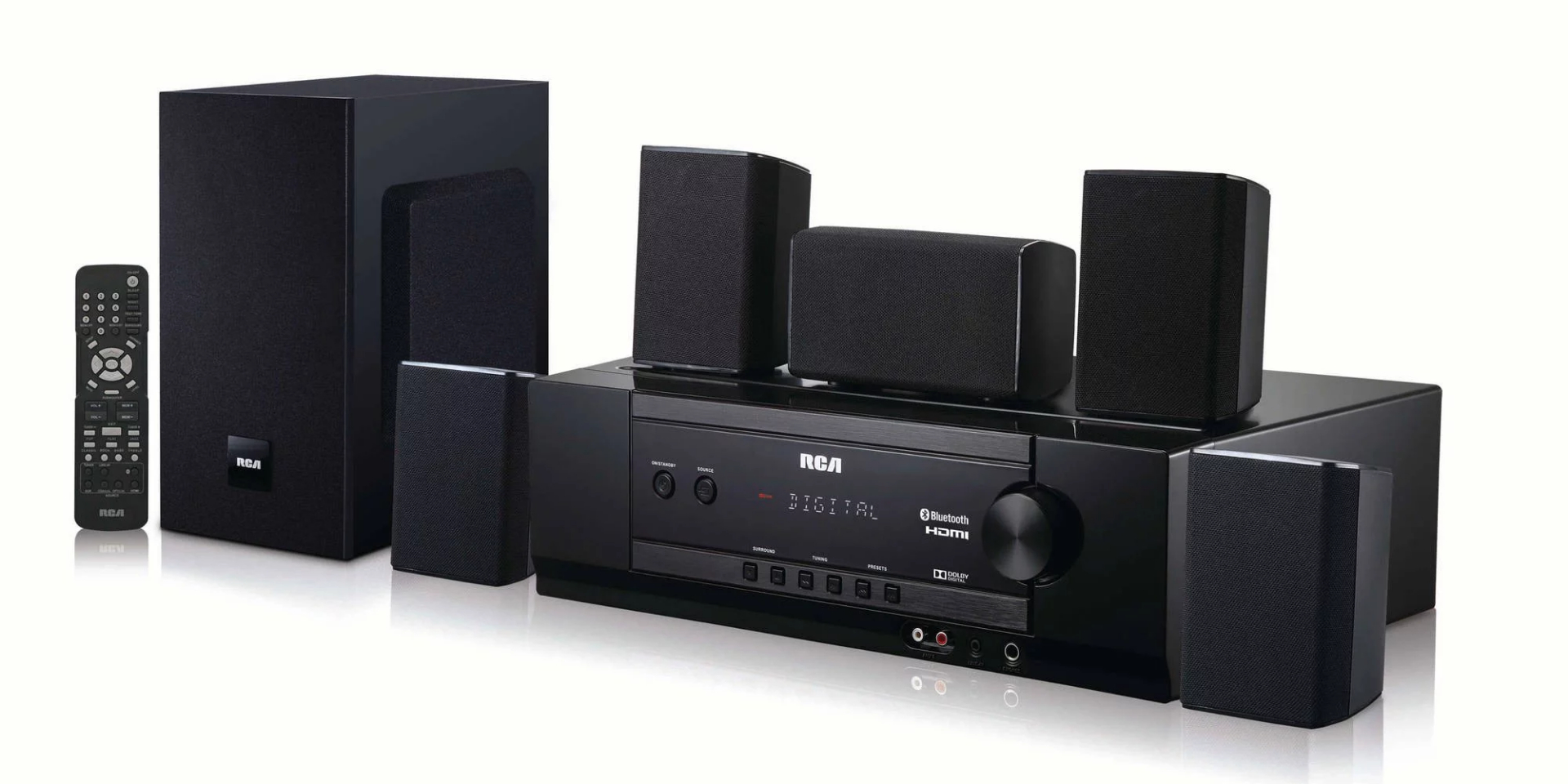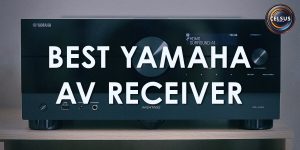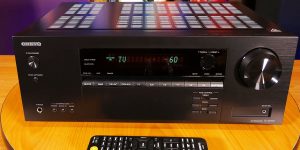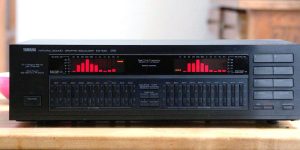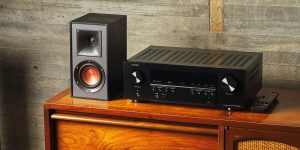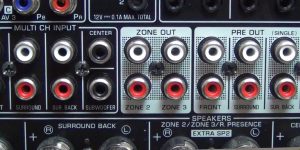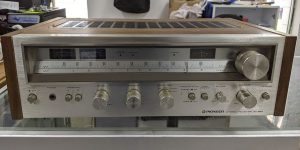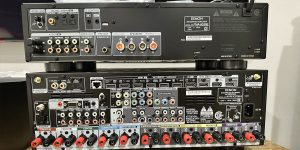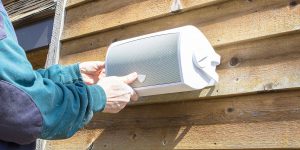The answer to this question is, unfortunately, no. While some general compatibility guidelines can be followed, there is no guarantee that a particular model of the speaker will work with a particular make and model of AV receiver.
It is not rare for people to find that their speakers are incompatible with their AV receiver, even if both components are from the same manufacturer. Additionally, certain features may only be compatible with certain types of audio equipment. By instance, Dolby Atmos-enabled receivers will only work with Dolby Atmos-enabled speakers.
The best way to ensure compatibility between your speakers and AV receiver is to consult with a professional before making your purchase.
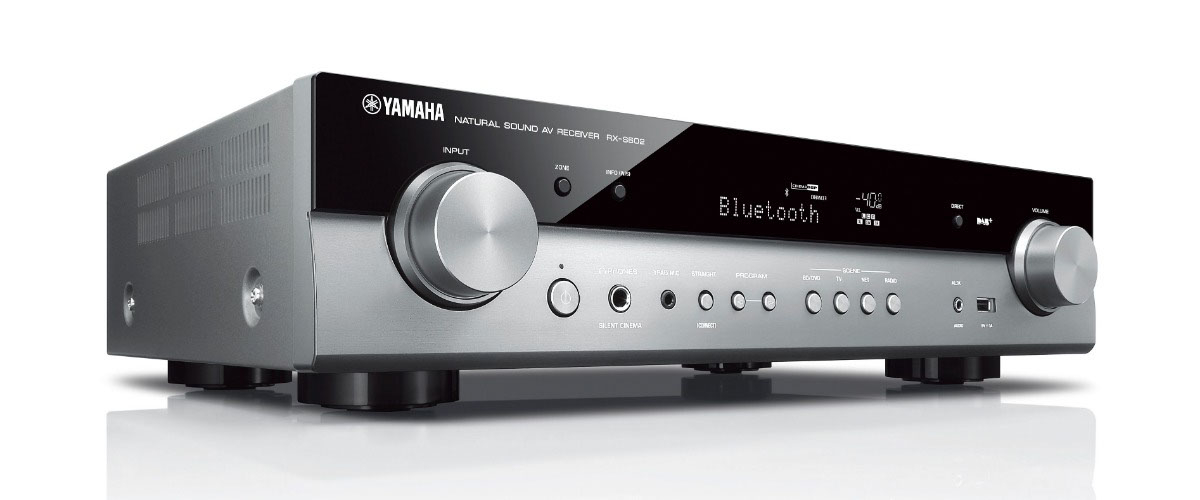
What should I consider to know if the AV receiver is compatible with my speakers?
A few key things to consider when determining whether an AV receiver is compatible with your speakers. First, you’ll need to ensure that the receiver has enough power to drive your speakers. Besides, you’ll need to ensure that the receiver has the right inputs and outputs for connecting to your speakers. Finally, make sure that the receiver is compatible with the impedance of speakers, frequency response, and signal-to-noise ratio.
The correct inputs and outputs
It is essential to know if the receiver has the right inputs and outputs to drive your speakers because if it does not, your speakers will not work correctly, or you will not be able to connect them. Additionally, if the receiver does not have the correct input and output connections, it could damage your speakers. Finally, wrong input and output connections can also cause sound quality issues.
For your speakers to produce sound, they need to be connected to a power source and an audio signal. The receiver is responsible for providing both of these things. If the receiver does not have the proper inputs and outputs, it will not be able to drive your speakers. So you will need to make sure that the receiver you purchase has the right inputs and outputs for your particular speaker system.
Power
If you’re sending a signal from your amplifier to your speakers and the receiver doesn’t have enough power, the speakers won’t produce sound. Additionally, if the receiver does not have enough power, it could damage your speakers or cause them to malfunction. Therefore, ensuring that the receiver you purchase has enough power to operate your speakers properly is essential. If the receiver lacks enough power, you’ll need to get a new receiver or amplifier.
There are several ways to tell if your receiver has enough power to drive your speakers. One way is to look at the wattage rating of your receiver and compare it to the wattage rating of your speakers. If your receiver’s wattage rating is higher than your speakers’ wattage rating, then your receiver has enough power to drive your speakers.
Another way is to listen to the sound quality of the receiver. If the sound quality is poor, the receiver may not have enough power to drive your speakers.
One more way is to use a multimeter to measure the voltage output of the receiver. If the voltage is too low, the receiver may not have enough power to drive your speakers.
Besides, you can check the sensitivity rating of your devices. This feature measures the power needed to produce a certain volume. The higher it is, the less power is needed. For example, a speaker with a sensitivity rating of 95dB would require less power than a speaker with a sensitivity rating of 90dB.
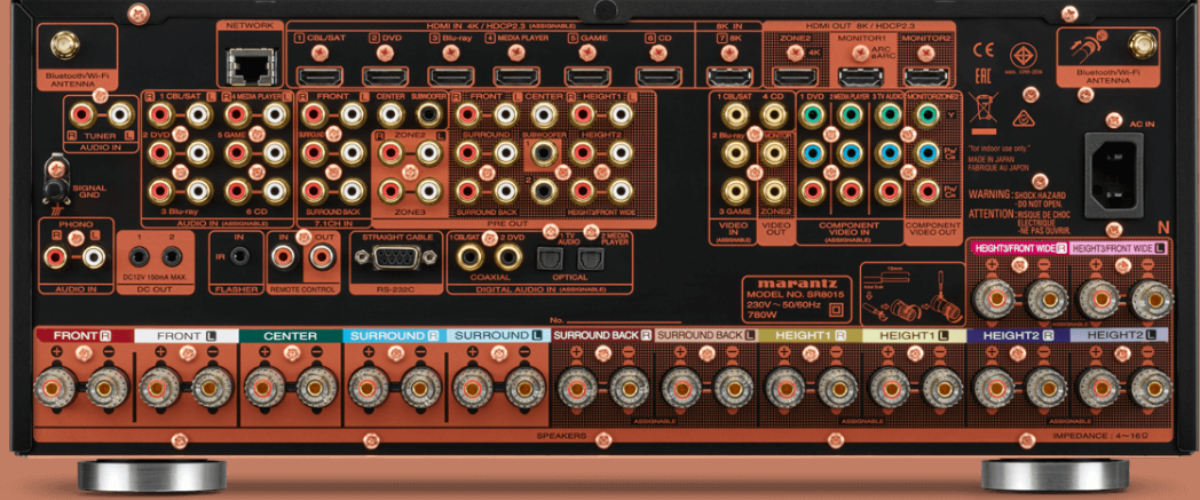
The impedance
The speaker’s impedance dictates how much power the speaker can handle from an amplifier. If the speaker’s impedance is too low, the amplifier will be unable to drive the speaker properly and may overheat or damage the speaker. Conversely, if the speaker’s impedance is too high, then the amplifier will not be able to deliver enough power to the speaker, and the sound quality will suffer. Therefore, it is essential to ensure that the receiver has the correct impedance to drive your speakers in order to get the best possible sound quality.
Generally speaking, most receivers can drive speakers with an impedance of 8 ohms or higher. However, if you have lower-impedance speakers (4 ohms or less), you may need an amplifier to handle that load.
Frequency response
Frequency response measures how well a system reproduces sound across various frequencies. Generally, the higher the frequency, the harder it is for a system to reproduce accurately.
If your speakers can’t reproduce the full range of frequencies your receiver can output, you’ll miss out on some of the details in your music. On the other hand, if your receiver can’t reproduce the full range of frequencies that your speakers can reproduce, you won’t be able to take full advantage of your speaker’s potential. Finally, if the receiver cannot correctly match the impedance of your speakers, it could damage them. Either way, it’s essential to ensure that your receiver and speakers are compatible in frequency response.
One way to check frequency capability is to use an SPL meter and play a tone through your speakers at different frequencies. If the SPL meter readings are consistently low at specific frequencies, your receiver likely doesn’t have enough frequency response to drive those frequencies effectively.

Another way to test this is to listen to your speakers. If certain frequencies sound muted or lacking in detail, your receiver likely doesn’t have enough frequency response to drive those frequencies effectively. The signal-to-noise ratio.
If the receiver does not have a strong enough signal-to-noise ratio, the speakers will not be able to produce a clear sound. As a result, it can lead to distortion and other audio problems.
It can make it difficult or even impossible to enjoy music or other audio content. Therefore, ensuring optimal audio quality is essential to ensure the receiver has an excellent signal-to-noise ratio. A good signal-to-noise ratio is therefore essential for optimal audio quality.
There are several ways to tell if the receiver has the proper signal-to-noise ratio to drive your speakers. One way is to look at the receiver’s specs and compare them to the specs for your speakers. The other way is to listen to the receiver and see if any hissing or crackling is coming from the speakers. If there is, the receiver does not have enough power to drive your speakers.
Can I connect the receiver and speakers of different brands, and will they be compatible?
If you’re looking to connect a receiver and speakers of not the same brands, it’s essential to ensure they are compatible. In most cases, as long as the receiver has the correct input and output connections, you should be able to connect it to any brand of speaker. However, there are some exceptions where certain brands may not be compatible. If you’re unsure, it’s always best to check specs and consult with a professional to ensure compatibility.

